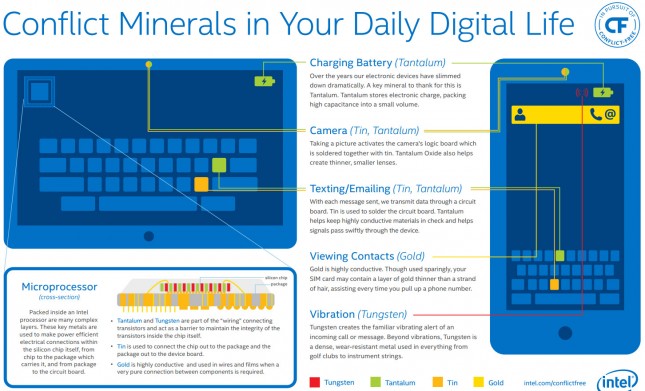Intel Meets Goal For Conflict-Free Minerals in 2014 On Consumer Microprocessors
Enthusiasts love Intel desktop and mobile processors, but chances are they are not thinking about what materials were used to make that processor when they are gaming or overclocking. The honest truth is that for decades many of the minerals needed to make processors came from conflict regions where the violence of war and oppression were rampant. Processors contain Gold, Tin, Tungsten, Tantalum and other minerals that are hard to come by these days. Back in 2008, Intel began looking into the conflict-free mineral movement and made the corporate decision to go down that path. Over the past five years Intel has visited 21 countries and over 86 mining groups/companies to ensure they not using ore that has come from militias or areas of conflict. Intel was able to successfully source conflict-free minerals and earlier this year at CES 2014 they were able to say for the very first time that all Intel consumer processors that were being manufactured in 2014 were from conflict-free mines.
We felt an obligation to implement changes in our supply chain to ensure that our business and our products were not inadvertently funding human atrocities in the Democratic Republic of the Congo, said Intel CEO Brian Krzanich. It is just a start. We will continue our audits and resolve issues that are found.

One of the countries that Intel gets minerals from is the Democratic Republic of the Congo in Africa. This is a country that has been marred by violence for over a decade. Intel wanted to understand what conditions were like in the trenches of the mines they were buying from, so they sent a team to the Congo to interview the miners themselves. You can watch the videos below and see how miners use rudimentary tools still to break the apart rocks holding precious minerals and then manually removing it from the put for further processing.
Although progress has been made, much work remains to be done, according to the sources we talked with at Intel about this earlier this week. Intel confirmed to us that all client microprocessors and chipset products (Core, Atom, etc) that were made and shipped in 2014 were, in fact, conflict-free. Intel has yet to make the move to conflict-free minerals on enterprise microprocessors, so right now server processors are still using minerals from conflict areas. Intel has a goal of using conflict-free minerals on all products starting in 2016 and still believes they are on track to meet the goal laid out at the beginning of this year. We applaud Intel for making these changes and hope the next time you fire up that PC you think about more than just how fast your OS loads. You can learn more about the conflict-free movement by Intel here.

